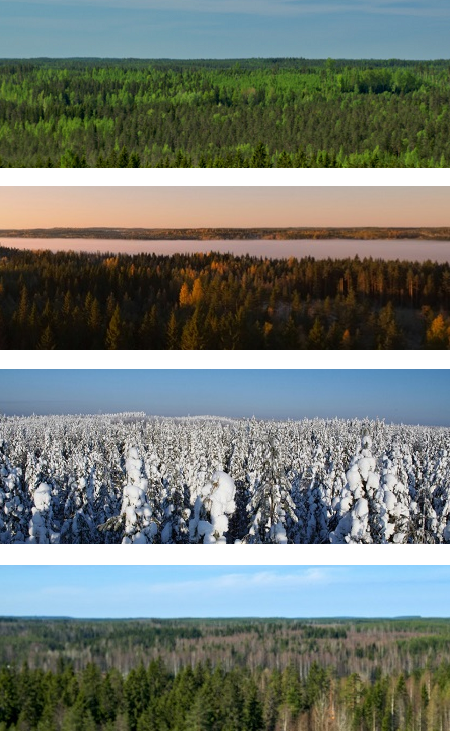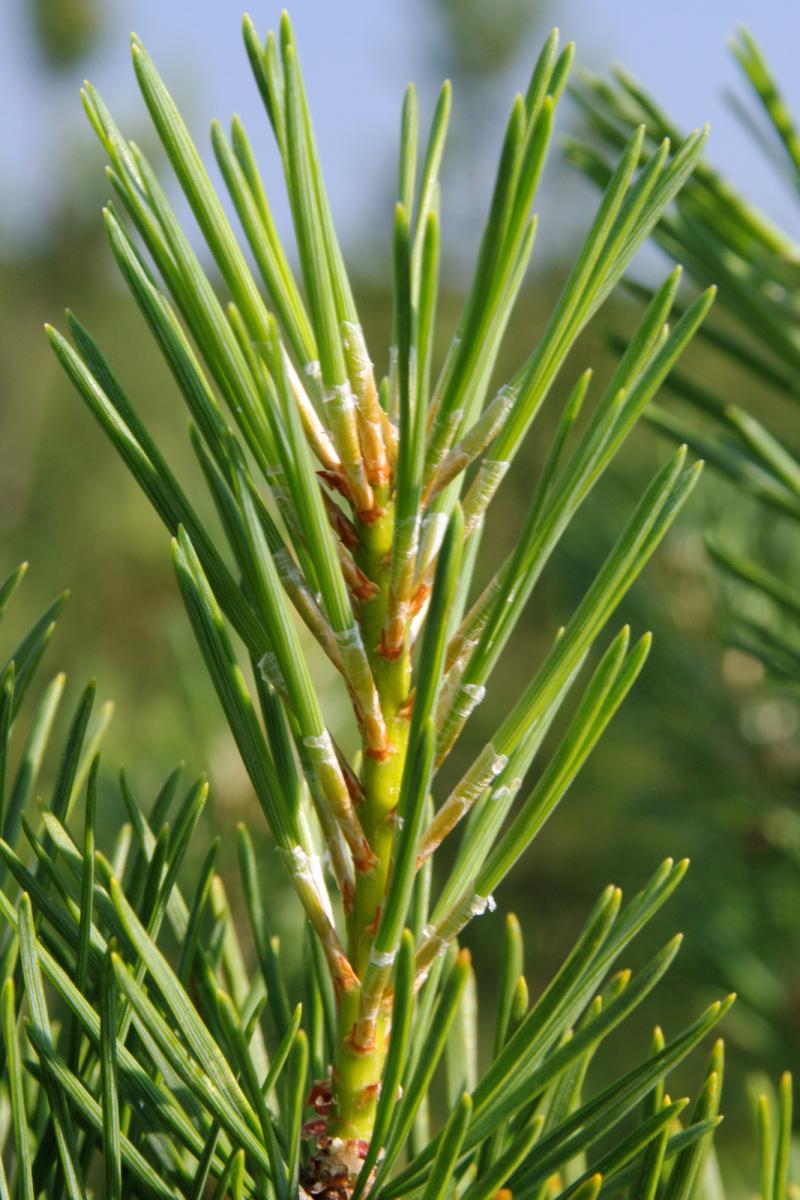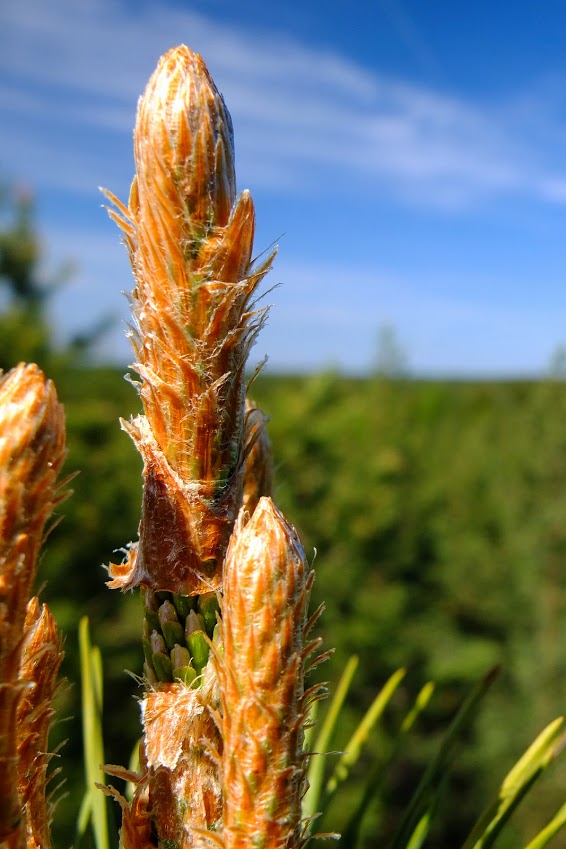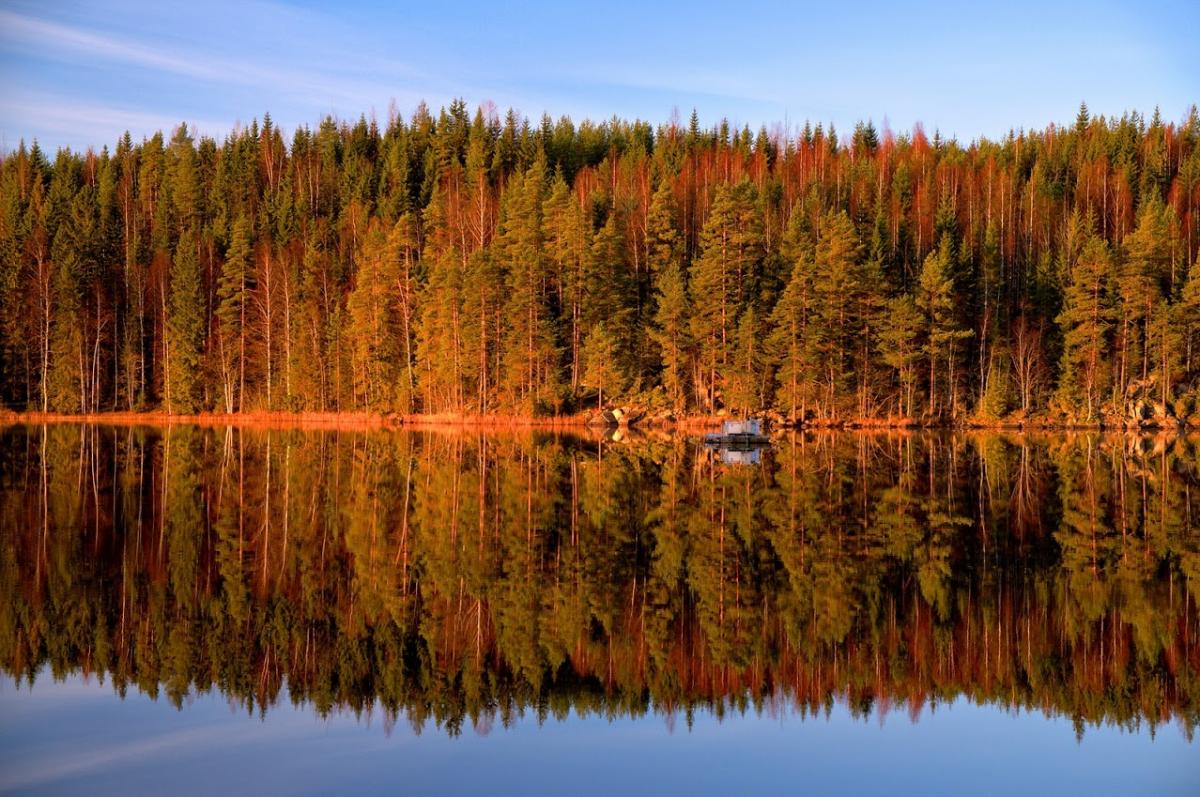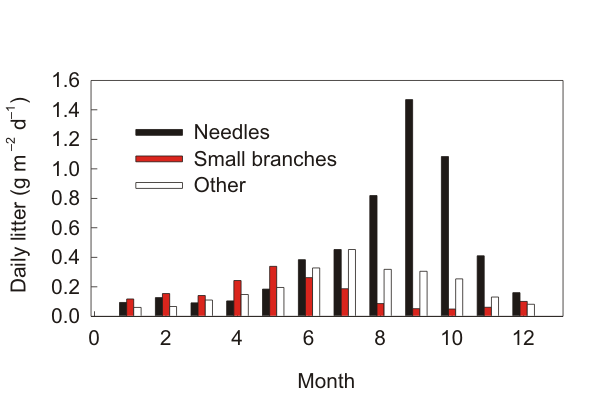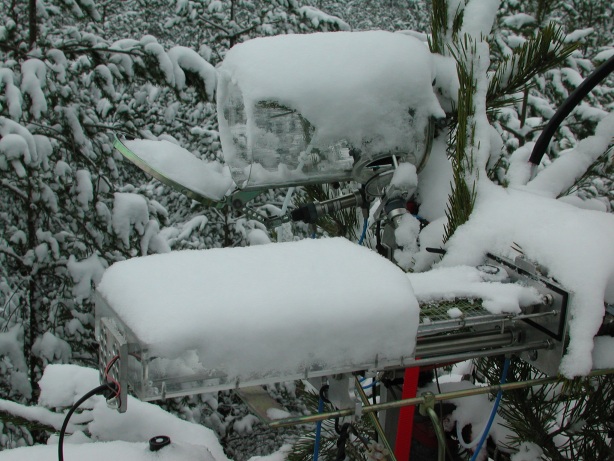The dynamics of a boreal forest throughout the year is strongly marked by the seasonality of the subarctic climate, which is the climatic area in the world where boreal forests thrive. In this area, forests typically experience a long cold season and a relatively short warm season. In addition, winters are particularly dark at higher latitudes. Boreal forests are rather wet ecosystems that rarely experience water stress – but also typically, water is unusable to plants when it remains in solid form (snow, ice) during the cold season.
These particular conditions restrict the tree species present in the boreal forest to those fit for survival in this environment. The trees which best succeed in these conditions are the coniferous evergreen species having needle-like leaves, such as pines and spruces. These trees are especially well-adapted to the harsh winter conditions. For example, the conical crown shape is ideal to stand the loads of snowfall, the dark colour of the foliage contributes to retaining more heat, the small needle-like leaves are resistant to the harsh conditions and drying. Finally, as these conifers retain the foliage during the winter, they are readily able to start photosynthesize as soon as proper conditions arise.
Spring recovery
Early spring is a tricky time of the year because it offers both simultaneously good and risky conditions. Good conditions are when the availability of light increases and the occasional occurrence of positive temperatures arise, although freezing temperatures still remain. Trees cannot take immediate advantage of the good conditions because there are too many simultaneous risky and/or limiting conditions. The water in the soil may still be frozen, and in addition, the air is quite dry – such that water availability is as bad as during a drought, up until the effective snow and soil melting takes place. Additionally, temperatures can still fluctuate below zero degrees, with the consequent risk of freezing. Thus, plants are cautious and the recovery of the metabolic activity is not an on-off affair; but rather a reversible and adaptive process where the functional capacities are recovered gradually. The initial recovery process is called de-hardening and it involves gradual re-hydration of the cells, recovery of the photosynthetic capacity, and a tight control of water loss. This recovery process is regulated by the accumulation of high temperatures. A certain amount of warm time is a guarantee that there is no more cold spells ahead. That is, only when it has been warm for a certain time, the tree enters full metabolic activity, typically in late spring.
A common dangerous situation that arises during the early spring are those very sunny but still quite cold days. In these conditions the leaves would be able to capture quite a lot of light energy but find themselves that they cannot use it yet in a productive way, because the metabolism is still lethargic due to the low temperatures. This excess energy may result in some destruction of the photosynthetic apparatus. To minimize such damage, the plant redirects the excess energy by dissipating it as heat and also can temporarily acclimate to the excess light by decreasing the efficiency of the light-harvesting pigments. All in all, the strong light in early cold spring is more of a problem than productive, and in fact it can inhibit the recovery of photosynthesis efficiency. The whole phenomenon of the decrease in photosynthesis due to exposure to excess light is known as photoinhibition. It can happen during any time of the year, but it is particularly critical during early spring.
During late spring the restrictions imposed by potential frost and frozen water reservoirs disappear. The meristems (the growing tissues) become active and the tree is prepared for growth, elongating buds to form the new shoots and thickening stems. The recovery process is expensive, and tree has to use a considerable amount of energy, which is reflected by the considerable high levels of respiration detected during the de-hardening period.
Summer growth
At the beginning of the summer all the metabolism is fully functional and all biological activity happens at the highest rates under favourable environmental conditions. During summer, photosynthesis achieves the highest rates and it is running full-capacity, only limited by the instantaneous and daily registers of temperature, light and water availability. The activity during this period is growth-oriented. The elongated shoots release the needles and the flowers, the tree trunk thickens and so do the roots.
At some point in the mid-summer, the activity shifts from growth to storage-oriented activities. The tree is then accumulating reserves to cope until the start of the next growing season. During this period, it is also forming the buds that will overwinter and finally elongate and mature the following spring.
The demand for energy during growth is considerable and thus the respiration is high. Later in the summer, the demands decrease and the base respiration gradually declines towards the lower autumn levels. Transpiration is intense during summer and it depletes soil water reserves notably, although this rarely becomes a problem under the precipitation regime in the boreal zone.
Autumn decline
During early autumn, trees are still photosynthesising in a similar manneras in summer, although at much lower intensity due to the less favourable environmental conditions. The overall photosynthetic capacity finally declines towards the end of the season. Although the trunk and stem growth stopped, roots continue to grow until late autumn as far as conditions allow.
Also in the autumn, leaf and needle shedding takes place as a culmination of the senescence process which allows recycling of material from tissues that have become, for various reasons, obsolete.
Most remarkably, during autumn, trees get ready to resist the difficult conditions of the coming winter and early spring. This process is called winter hardening and it is triggered by a combination of day length and temperature clues. Hardening is aimed at avoiding damage by ice formation at very low temperatures as well as avoiding damage by excess light during early spring. This involves slight dehydration of the cells, stabilization of the membranes, and changes in solute concentrations. Autumn precipitation is considerable and forest transpiration declines. Thus, water accumulates in the soil.
Some extra energy is again required for all these preparatory processes and that makes the respiration slightly higher than expected in relation to late summer levels (although in any case much lower than in spring and early summer).
Winter dormancy
During the harsh cold season, trees maintain themselves in a protective mode. The structure and physiology of the plant cells in this dormant state is different from the active season. During the preceding autumn, the cells underwent a hardening process that made them ready to withstand the low winter temperatures. This preparation is intended, above all, to avoid formation of ice crystals in the cells.
Trees, thus, rough it through the winter without doing much. Meanwhile, the ecosystem receives snowfall from which it takes advantage in several ways. Snow accumulation is a good reservoir of water. Snow cover also has an insulating effect, allowing somewhat warmer conditions under it. Small plants, microbiota and soil activity, in general, benefit from this.
